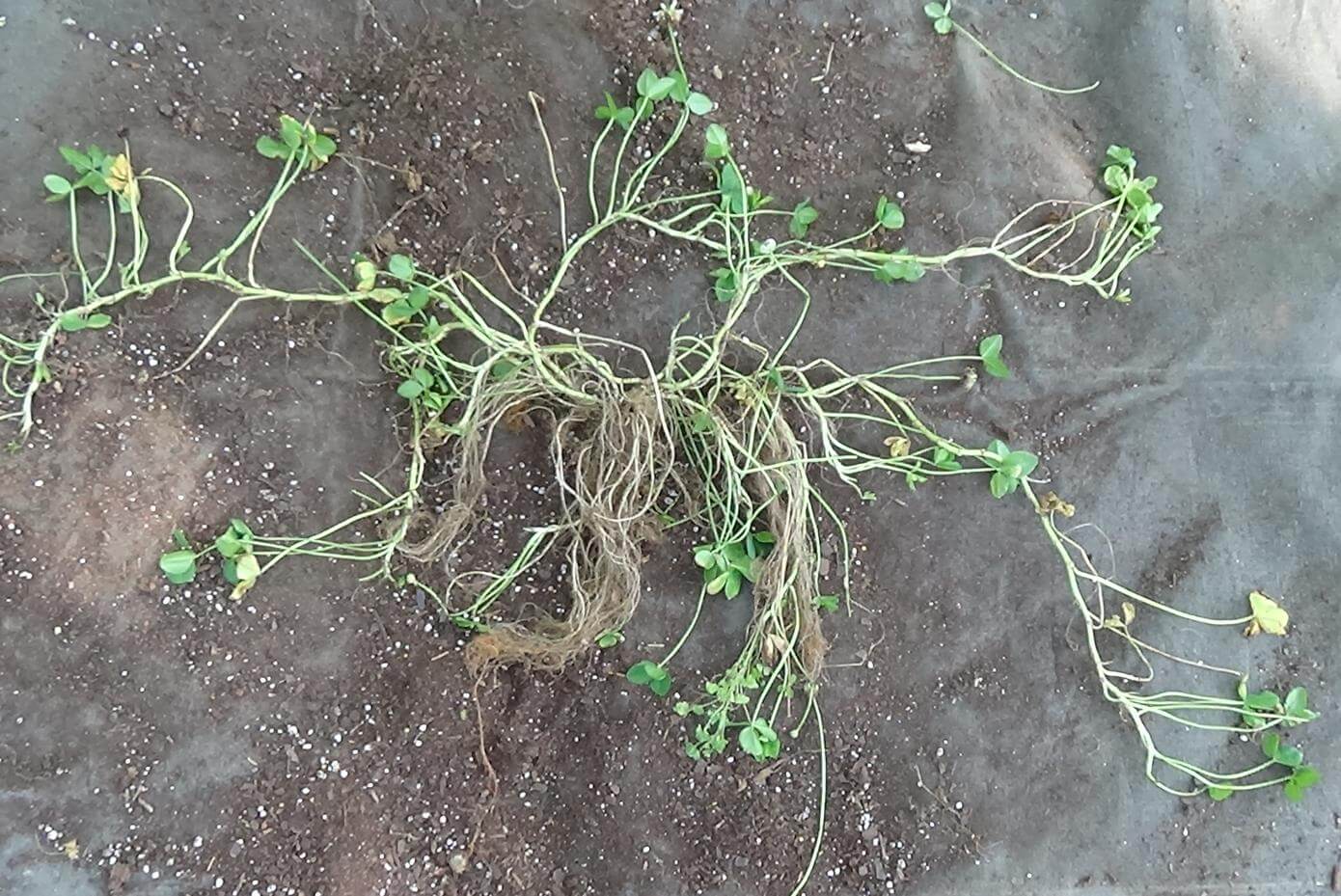Kakariki Intermediate White Clover
Kakariki is a large-leafed clover boasting high stolon density, high yields and excellent rooting. It's great for hay, grazing, wildlife, pollinators and erosion control.
Variety Summary
Kakariki is a large-leafed clover boasting high stolon density, high yields and excellent rooting. This combination provides increased yields and greater persistence, making a dynamic multi-use perennial clover. Kakariki is ideal for both hay and grazing, as well as wildlife, pollinator habitat, and erosion control.
Penn State University
Clover Trial (Yield in DM/A)
Rock Springs, PA
|2017
| Variety | 2018 | 2019 | 2-yr ave |
|---|---|---|---|
| Kakariki | 3.06* | 2.73* | 2.90* |
| Legacy | 2.87* | 2.48* | 2.87* |
| Renovation | 2.70* | 2.10* | 2.40* |
| Lsd | 0.53 | 0.96 | 0.61 |
Large Leaves = Higher Yields
Large-leaved clovers grow taller and more upright, having thick stolons and robust roots. These types are best used for hay or in taller, rotationally grazed pastures. Large-leaved types are potentially very productive but have fewer stolons and hence a lower capacity to regenerate and persist. Kakariki maintains large leaves, even under persistent grazing.
More Stolons = Better Persistence
Smaller-leafed clovers typically have more stolons and growing points than larger-leaved clovers. Persistence is generally higher in white clover cultivars with the highest density of stolon growing points. As shown in the photo, Kakariki has very high stolon density, with prolific growing points.
Large Leaves + More Stolons = Kakariki
This combination of key features positions Kakariki to be a powerful dual-purpose clover. Kakariki may be harvested for hay, as well as planted for grazing and wildlife habitat, with expectations of sustained longevity for many years. In addition to the hay trial data shown here, the latest data from University of Kentucky’s cattle grazing study showed Kakariki equal in grazing persistence to all other entries, including Renovation, Durana and RegalGraze.
University of Kentucky
Clover Trial (Yield in Tons/Acre)
Lexington, KY
|2017
| Variety | % Stand Oct '19 | 2017 | 2018 | 2019 | 3-yr total |
|---|---|---|---|---|---|
| Bombus | 94* | 1.59* | 3.13* | 1.79* | 6.51* |
| RegalGraze | 87* | 1.71* | 3.12* | 1.50* | 6.33* |
| Kakariki | 94* | 1.63* | 2.99* | 1.46* | 6.09* |
| Will | 92* | 1.43* | 2.93* | 1.40* | 5.77* |
| Brianna | 80 | 1.40* | 2.90* | 1.37* | 5.67* |
| Alice | 91* | 1.09 | 2.89* | 1.37* | 5.35* |
| Durana | 91* | 1.11 | 2.50* | 1.41* | 5.02 |
| Rivendel | 87* | 1.1 | 2.4 | 1.48* | 4.98 |
| Lsd | 15 | 0.49 | 0.69 | 0.45 | 1.26 |
Multiple Uses
As stated above, Kakaraki has many uses including:
Dilute Toxic Fescue
Kakariki can help lessen the effects of endophyte toxicity and contribute to overall herd health, when planted into toxic endophyte pastures.
Nitrogen and Protein Booster
Kakariki provides both nitrogen fixation and extra protein when sown with both cool-season and warm season grasses.
Wildlife and Pollinators
Kakariki can be planted straight or part of a mix for wildlife food plots and pollinator habitat. It will provide abundant, protein-rich feed and prolific flowers.
Erosion Control
Kakariki’s aggressive stolon growth and vigorous root system reduces erosion.
Perennial Cover Crop
Kakariki can be used in row crops, orchards, and other to fixate nitrogen, reduce weed pressure, and build soil health.
Management of Kakariki
Once established and properly managed, Kakariki should provide numerous years of free nitrogen and protein-rich feed. Longevity will depend on location and management. In hotter regions, with predominately warm-season species, it should last at least 1-2 years, while in cooler climates it should live 3-5 years, or longer. Broadcast 1 lb/acre of seed annually, or as needed.
Researchers recommend 25-30% clover percentages in grass pastures. Bloat is a concern for pastures exceeding 35% white clover. The percentage of Kakariki in a stand can be managed using these tools: grazing or mowing height, fertilization, and reseeding.
To increase the amount of Kakariki: Graze or mow more frequently at lower heights. This allows Kakariki plants to increase their photosynthesis activity, and excite more stolon growth. Regularly fertilize with nitrogen-free fertilizer based on soil test recommendation. Lastly, overseed thin areas with more Kakariki.
To decrease the amount of Kakariki: increase grazing and mowing heights, fertilize with nitrogen, and introduce other desired plants.
Planting Instructions
Before you plant
Kakariki performs best in soils with a pH 6.0-6.5. It will also grow in semi-acidic soils as low as pH 5.0. Kakariki will perform better on moist, well-drained, fertile soil. Seeding into deep sandy soils is not recommended. For optimal performance, conduct a soil test and follow the recommended lime and fertilizer recommendations.
In established pastures, remove excess forage through grazing or late season haying. This will help ensure successful seedling emergence and establishment. Reduce weed population prior to planting. Be aware of herbicide carryover/residual of chemicals applications prior to planting.
Depth/Method
Plant into a prepared/firm seedbed by broadcast or drill. Planting too deep may lead to poor establishment or stand failure. Cultipacking or dragging before and after seeding helps create a firm seedbed.
Inoculation
For optimal performance be sure to inoculate with a high level of the leguminosarum biovar trifolii rhizobium before planting. We recommend purchasing Kakariki pre-inoculated with our exclusive Nitro-Coat® process.
Seeding Rate
Planting Dates
Planting Map
Planting Depth
1/8-1/4"
Optimal pH
6.0-6.5
Fertilizer
Apply lime, potassium and phosphorus per soil test results. No nitrogen is necessary.
